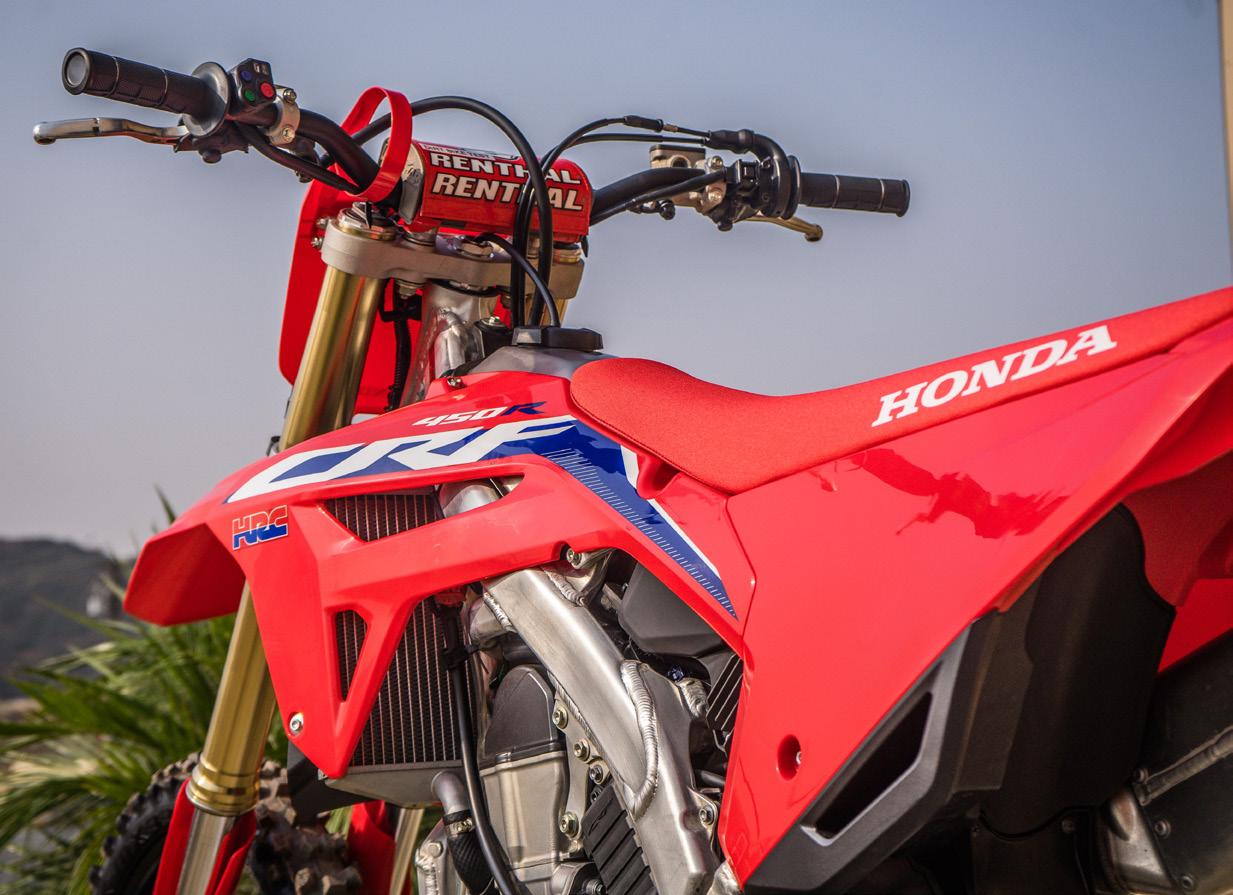
14 minute read
2021 HONDA CRF450R
by dirtbiketest
ROOST - Easier to ride CRF450R - Slim bodywork and agile-feeling bike - Hydraulic clutch - Simplified maintenance
ENDO - Suspension is on the softer side for faster/heavier riders - ECU mapping is inconsistent with a rich/dirty feel off bottom - Map selection/traction control/launch control switch is complicated
Advertisement
PRICE - Price: $9,599.00
Honda has been a powerhouse in the sport of Motocross. Some of the most iconic riders and machines have all adorned the Red Wing in style. Though it started in 1973 with the “Elsinore” CR250M, Honda’s current flagship model lives on with the mighty CRF450R. The CRF has had a roller coaster legacy, debuting and living on as one of, if not the best, bike for several years, then shortly thereafter, it changed. Or competition arrived. The CRF appealed to some riders while being disregarded by others. While Honda has continued to develop throughout the years, and at times won back its critics, the 2020 generation 450 saw mixed results. Some loved it, others hated it. With that in mind, Honda has set out to smoothen out the rough spots and build a better all-around bike for the masses with the 2021 version.
- Newest generation CRF450R. - Honda’s flagship 450cc MXer.
TREVOR HUNTER
PHOTOS BY DREW RUIZ & TREVOR HUNTER
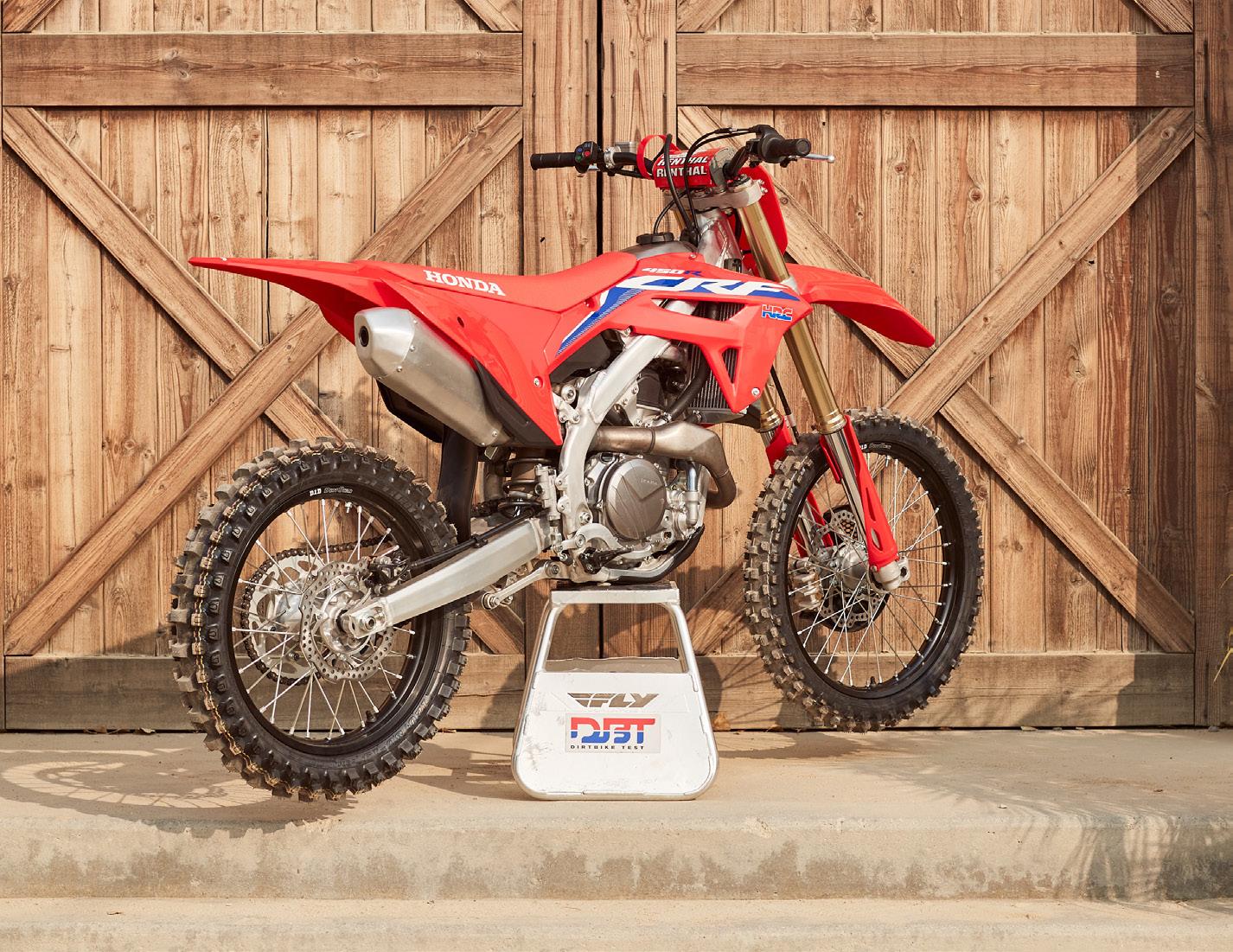
The ‘21 CRF450R is all new. New bodywork, an updated chassis, and a revised motor package boast a plethora of changes on Honda’s 450cc MXer. Honda’s catchphrase for 2021 is “Razor Sharp Cornering” though we don’t really understand why. The last generation bike was one of the better cornering machines, and the list of changes looked to improve stability while possibly giving up some of that cornering ability. Additionally, the changes were made in an effort to reduce rider fatigue and enhance consistency. Check out the complete list of changes on DirtBikeTest.com for an in depth look at the specifics.
- All new for 2020 - Near 5 lb weight loss from 2020 - Revised engine components and ECU mapping - Revised chassis with optimized flex characteristics - Updated Showa suspension settings - New bodywork
CLICK HERE FOR BIKE SPECS
We’ll start off by saying the power on the new CRF450R is really good. Dare we say it reminds us of a certain Austrian brand? In short, the bike has a lot of power delivered in a linear fashion. On the previous gen engine, the power had several steps in it in comparison to the new motor. The 2020 would start off with an explosive hit, fall off slightly, surge back up, tame down, then surge again. It was very intimidating and difficult to ride for some. This is where we’ve seen the biggest improvement on the ’21 power plant. Honda lived up to its promise in delivering a consistent, easier to ride motor.
Down low, the bike has good, smooth power that you can roll on with a slow twist of the wrist, or even whack it open without looping out. Coming off the bottom, it is a smooth transition into the mid-range and through the top. The power delivery is very linear and we say it likes to make traction as it builds RPMs. When a bike’s power gets notchy and surges, the rear wheel tends to break loose, requiring some clutch work or adjusting the throttle. However, this ’21 machine keeps it consistent with laying down a lot of power in an easy to ride manner. Overall, it’s much less fatiguing and intimidating than the older bike while still fulfilling our adrenaline needs and getting around the track in a hurry. By no means are we saying this is a slow bike. In a sense, it’s faster than the last bike!
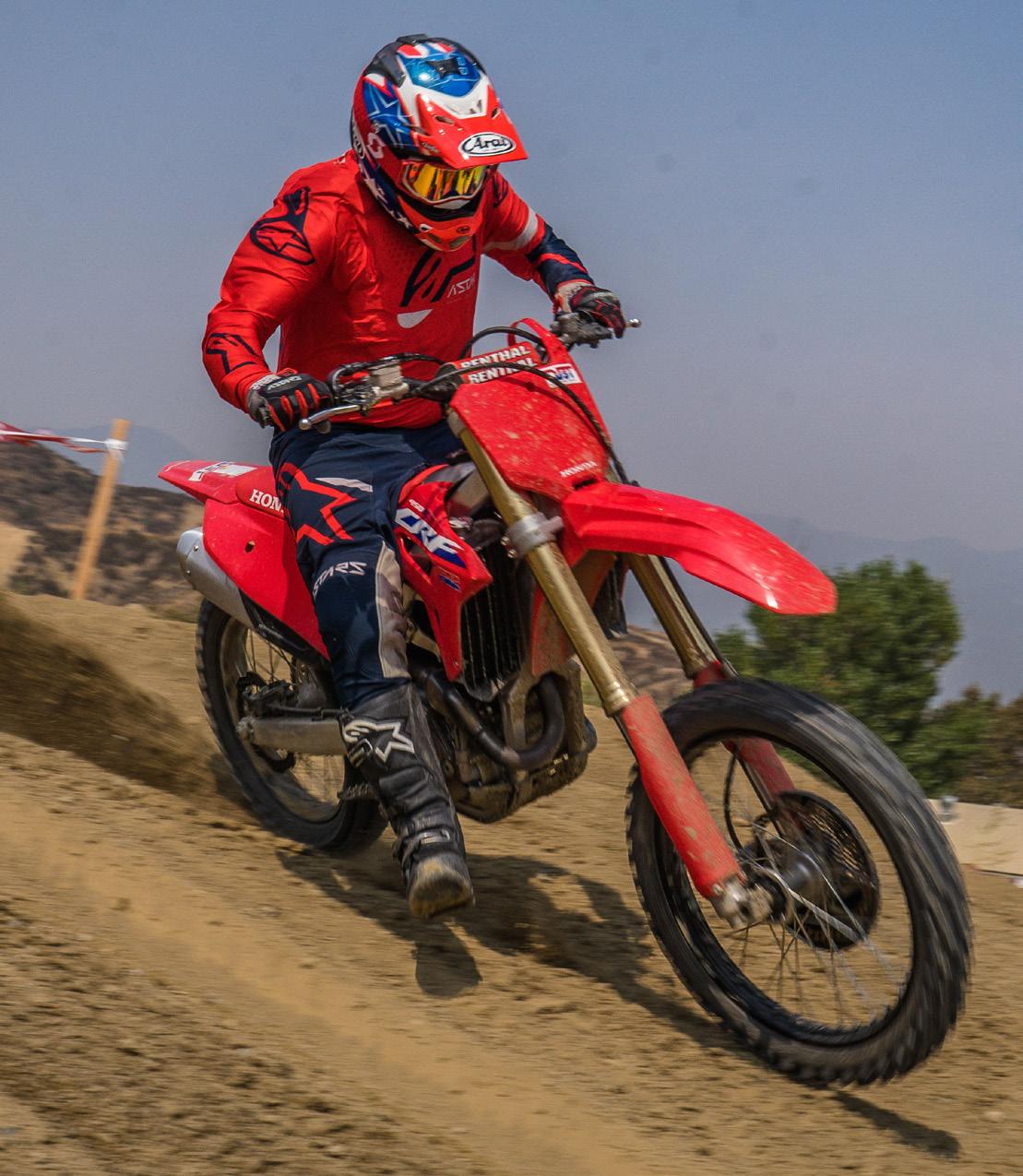
Onto the mapping, this is where the bike falters. In the standard map (Map #1), the bike has a rich/dirty/inconsistent sensation off the bottom. This is typically felt when riding in lower RPMs and with smaller throttle openings. Is it ideal to have this rich feeling off the bottom? No, but it’s more of an annoyance than a hindrance in our opinion. What’s strange is the inconsistency in the gurgle. Some days, the bike runs fine for the most part, then it becomes more apparent later in the day. Other days it was completely nonexistent, and some it was consistently there throughout the day. Some riders felt it, others didn’t. Honda is still in the process of finding a solution to the problem, though we’ll update when we can.
The intricate F1-like map selection switch also boasts two other maps, Mellow (Map #2) and Aggressive (Map #3). None of our testers preferred Map 2 due to its “lack of power” or “lazy feeling.” Throttle response isn’t quite as crisp and the overall power is tamed down. In turn, it made it a little harder to ride the bike and required our riders to be more aggressive. Contrarily, the aggressive map (Map #3) allowed some riders to be smoother and makes riding the 450 easier. The extra response down low gives us enough juice to short shift, ride a gear high, and lug our way through corners, whereas this isn’t as feasible in Maps 1-2 without using the clutch. Our lighter, more aggressive riders gravitated towards Map 1 since it had enough power to still effectively ride a gear high, or responded well to higher revving and more aggressive riding. To note, the hiccup off the bottom
was much less apparent in Map 3, likely due to having a seemingly leaner setting programmed. Our gripe with the map selection is that it is more difficult than others to switch between maps. You must have the throttle closed and at idling RPMs to switch. We were able to pull the clutch in and roll around a turn or down a hill and switch maps, but it isn’t as simple as a Yamaha or KTM/Husky.
Honda also offers its signature HSTC (Honda Signature Torque Control) with three different levels. We aren’t huge fans of the system since it feels like it is most effective at lower RPMs and lower throttle openings. Our higher-skilled riders feel they can do a better job of managing the power through their wrist/clutch finger and adjust when needed.
A new addition to the Honda is a Nissin hydraulic clutch. Even riders who don’t prefer hydro clutches liked the feel of the Honda clutch. It boasts a light pull and offers more modulation than some other hydraulic clutches. One tester has also gotten used to a one-finger pull on this clutch, whereas every other bike he uses two fingers. It almost feels like a smooth cable clutch in action. So far, we haven’t had any durability issues with it, though we aren’t big clutch abusers here at DBT. Shifting is as smooth as butter and the ratios are all on point. The lone muffler looks bigger, but has a nice, soothing tone to it that’s rather quiet when riding.
- Smoother, linear power delivery that’s easy to ride yet still fast - Mapping issues off bottom at low RPMs - Hydraulic clutch has a smooth pull and larger engagement window - Different maps make a difference and can tailor the motor to different riding styles
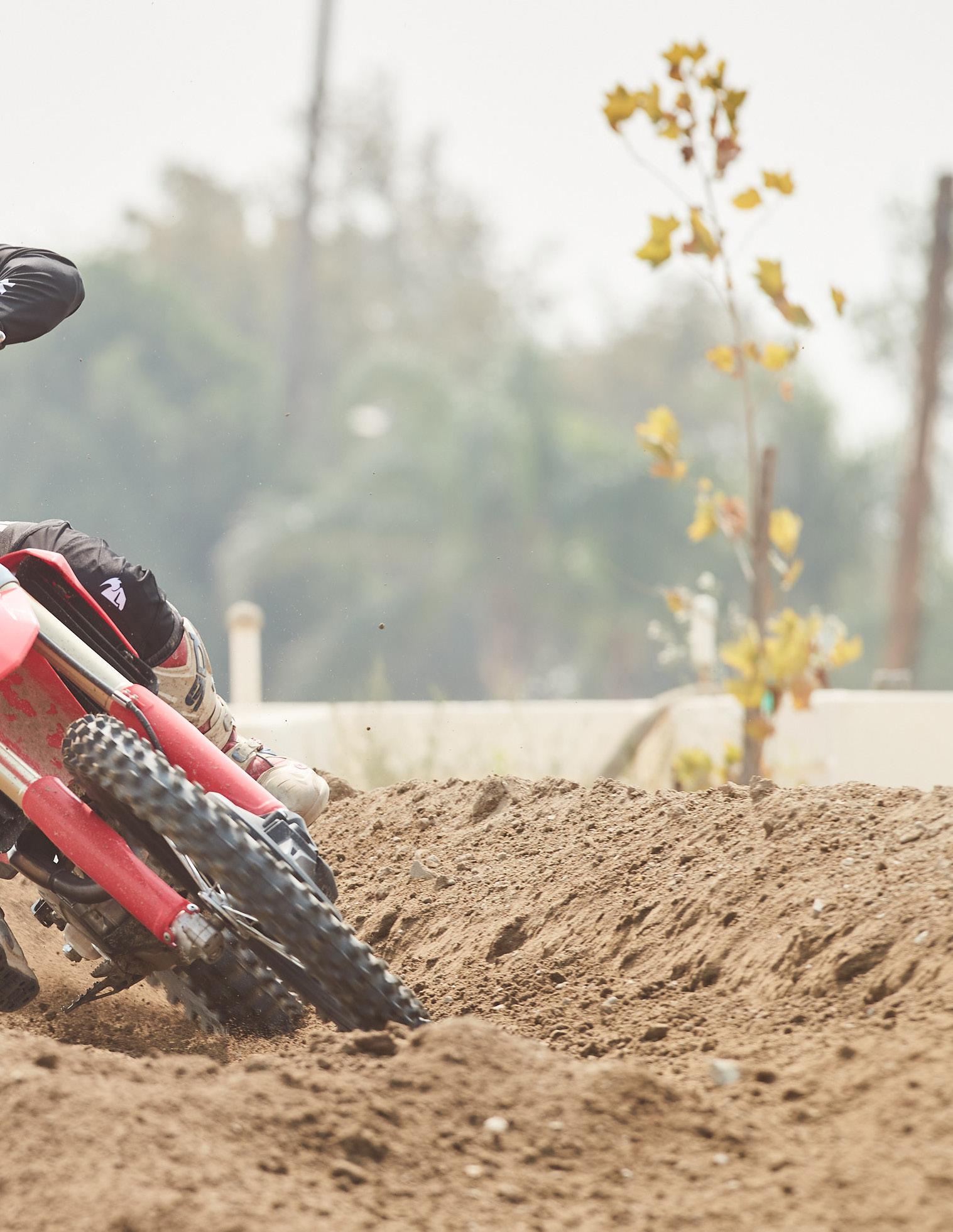
Moving on to the suspension, the CRF has its quirks. Our initial feelings at the intro day were the Showa suspenders offered KYB-like comfort with enough stiffness. While it does offer comfort on a smooth track, the suspension suffers when the bumps grow bigger due to its soft character. Both the fork and shock are on the softer side, even for our lighter and smaller riders. Nearly everyone who rode the bike on a variety of tracks felt the suspension is too soft. From 150 lb Vet B riders to 200+lb riders, the feelings were the same. Typically, our smaller riders feel 450 MX suspension is on the stiffer side, so this is a noticeable difference from other 450cc motocrossers.
If you’re sticking to the vet tracks where jumps are smaller and tamer, and bumps aren’t much of a factor, this bike works really well. The softer suspension stays planted to the ground and offers comfort unlike previous Honda 450s. However, main tracks and faster or bigger riders will likely look for some suspension tuning. The bike rides low in the stroke front and rear which gives it a stiffer feeling, though it is soft. When riding lower in the stroke, it’s initially into stiffer valving which prompts the stiff feeling. Additionally, when you charge into bigger bumps, land in holes, or over jump an obstacle, it blows through the stroke. This is more so on the fork than the shock, but the shock still is on the softer side. Additionally, coming out of choppy corners, the rear end hangs up a little and deflects on acceleration chop.
To combat this, we’ve made a few adjustments to do our best with the stock settings. First, we ran the sag in 105mm-107mm range. This gave it some stability while keeping cornering abilities. Additionally, we added 20cc of oil to each fork leg. This helped control the bottoming and improved the overall front-end feel everywhere on the track. Next up, we dropped the forks from 5mm up to only 2mm up in the triple clamps. This added some much needed stability on corner entrance and on faster, choppy straightaways.
For clicker settings, we’re pretty far in which tells us we could use some heavier springs and/or valving for our riders. Below is a quick rundown of where everything is at:
Fork - C: 3 out; R: 14 out; +20cc fork oil; 2mm in clamps Shock - LSC: 3 out; HSC: 2-2.5 out; R: 7 out; Sag: 105mm107mm
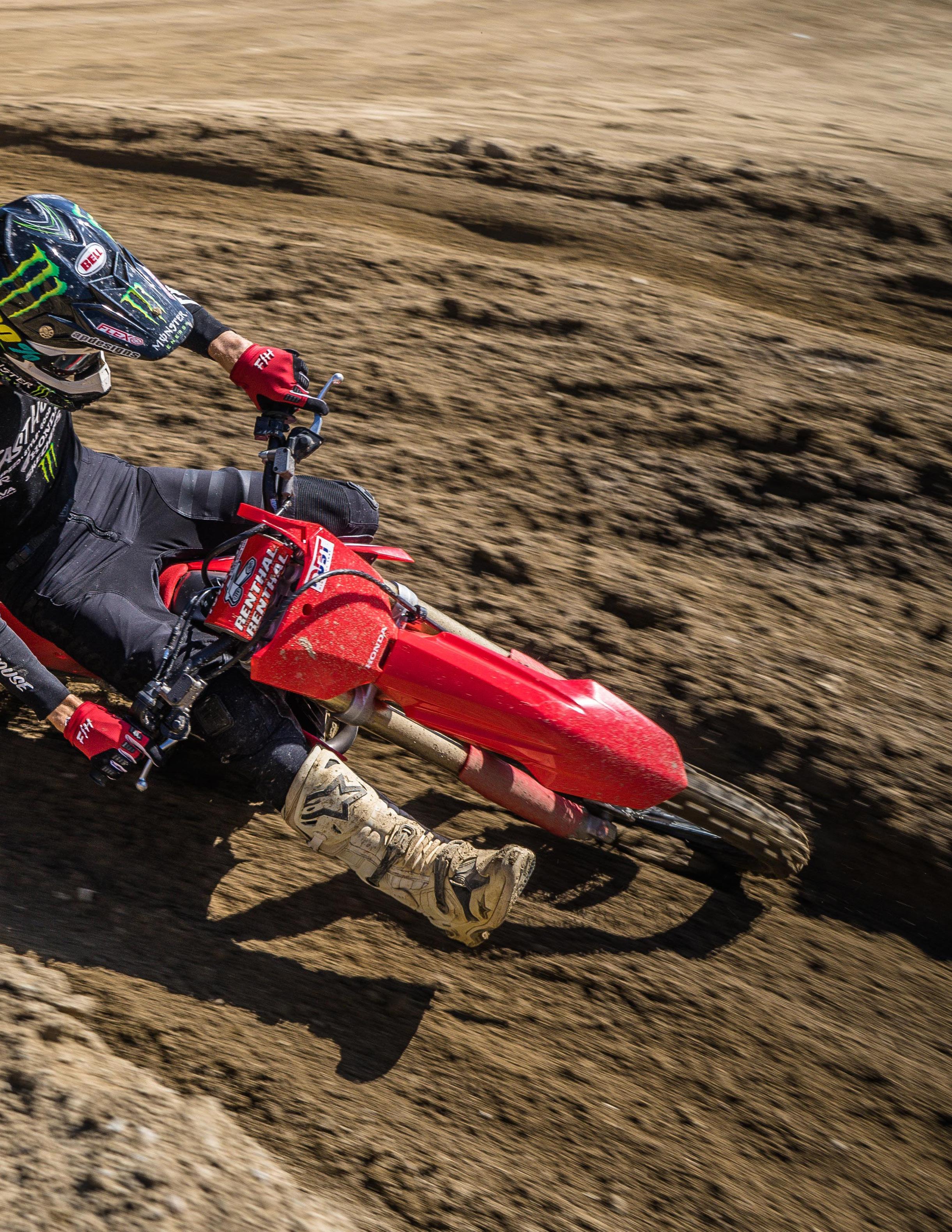
Handling wise, we feel the 2021 CRF is an improvement for most. That previous gen chassis was stiffer and difficult to ride hard for an extended period of time on anything but the smoothest terrain. Now, the chassis is much more compliant and pleasing to ride. The 450R chassis soaks up square edges and small chop without as much deflection as previous.
In addition to the added comfort in the chassis, the Honda feels much lighter, which kind of contradicts the additional comfort felt. Lighter-feeling bikes can be harsher as they deflect off of bumps rather than soaking them up with weight to keep it planted. Through the front end/handlebars, it feels similar in terms of weight, which is light. However, the newfound lightness is felt more in the footpegs. The bike is easier to maneuver and control through the pegs. This is mostly felt when jumping or under acceleration when the front wheel is unweighted a bit. This goes along nicely with a light-feeling front end that is easier to “point and shoot” when diving into a corner. As stated in the Suspension section, dropping the forks worked wonders with this bike. At stock height, the front end is a little twitchy at speed and upon corner entrance which ultimately upset our in-corner performance. Dropping the forks resolved this while maintaining good front-end traction through the corners.
In tight and rutted corners, the Honda is one of the better bikes. Once into a corner, the bike will stay planted in the rut and drive through without getting upset. The updated chassis also gives you a better feel for the ground and the bike moving underneath you. In faster sweeping turns, dropping the forks helped with front-end stability. As with most bikes these days, Dunlop MX33 tires come stock front and rear. The rear is a monster, and will pop the front end up as soon as the tire is back to near vertical coming out of a corner. In addition, it has good lean angle traction and responds well under braking. Contrarily, we can’t say the same for the front tire. When in soft and loamy terrain, the front tire works well. Once the track starts to dry out a tad and it gets remotely hard packed, the front end tends to break loose mid-turn. We’ve experienced this on quite a few bikes, so we turned to Dunlop’s MX53 Intermediate Terrain front tire. It works nearly as good in the soft terrain, but transitions much better into harder dirt. This is an easy mod we’d recommend on nearly any bike, especially those that frequent vet tracks.
Another welcomed change to the Honda, and something that is brought up by everyone who rides the bike, is how narrow it

feels. The bodywork retains a slim fit and offers just enough to get a good grip with your legs, but not too much to get in the way. In addition, the rider cockpit is typical Honda, which is really good. Some of our testers didn’t gel with the rider triangle on the previous gen CRF, and although Honda claims they didn’t change much, it felt much better. The seat is flatter and makes it feel like you’re sitting on the bike, not in the bike. Some complained that the seat felt hard and needed more cushion, but that is one of the performance aspects to us. It gives the bike a sporty feel and keeps you from sinking into a pocket in the seat. Additionally, the bars are a neutral bend that most can get accustomed to. The footpegs are average on the Honda. When they get wet or get some mud on them, they can get slick really quick. Brakes work pretty good for a Japanese motorcycle, which is good these days.
Maintenance is simplified on this bike, which is a plus. Accessing the air filter is one side panel bolt and an off-road style hook and loop fastener to secure the filter. Sliding the panel on is a little tricky, but much better than removing the seat. Also, the filter change can kind of be confusing, but foolproof for the most part. Both testers went to put the filter in backwards by mistake, but it won’t allow for it. Also, it sits almost upside down in the air boot, which prevents any dirt from falling in the intake tract when pulling out a dirty filter. The filter cage sits on the outside of the filter which is nice knowing it doesn’t have to be spotless when reinstalling. Oil change is three skid plate bolts and one oversized Allen bolt from draining. Being vertical on the underside of the case, it pours out as soon as you remove the bolt, but it drains quickly. Also, the screener and oil filter are easy to access.
- Slim bodywork and flat seat feels sporty - More forgiving than previous gen bike - Dropping the forks increased stability without sacrificing cornering - Lighter feeling through the footpegs than 2020 model
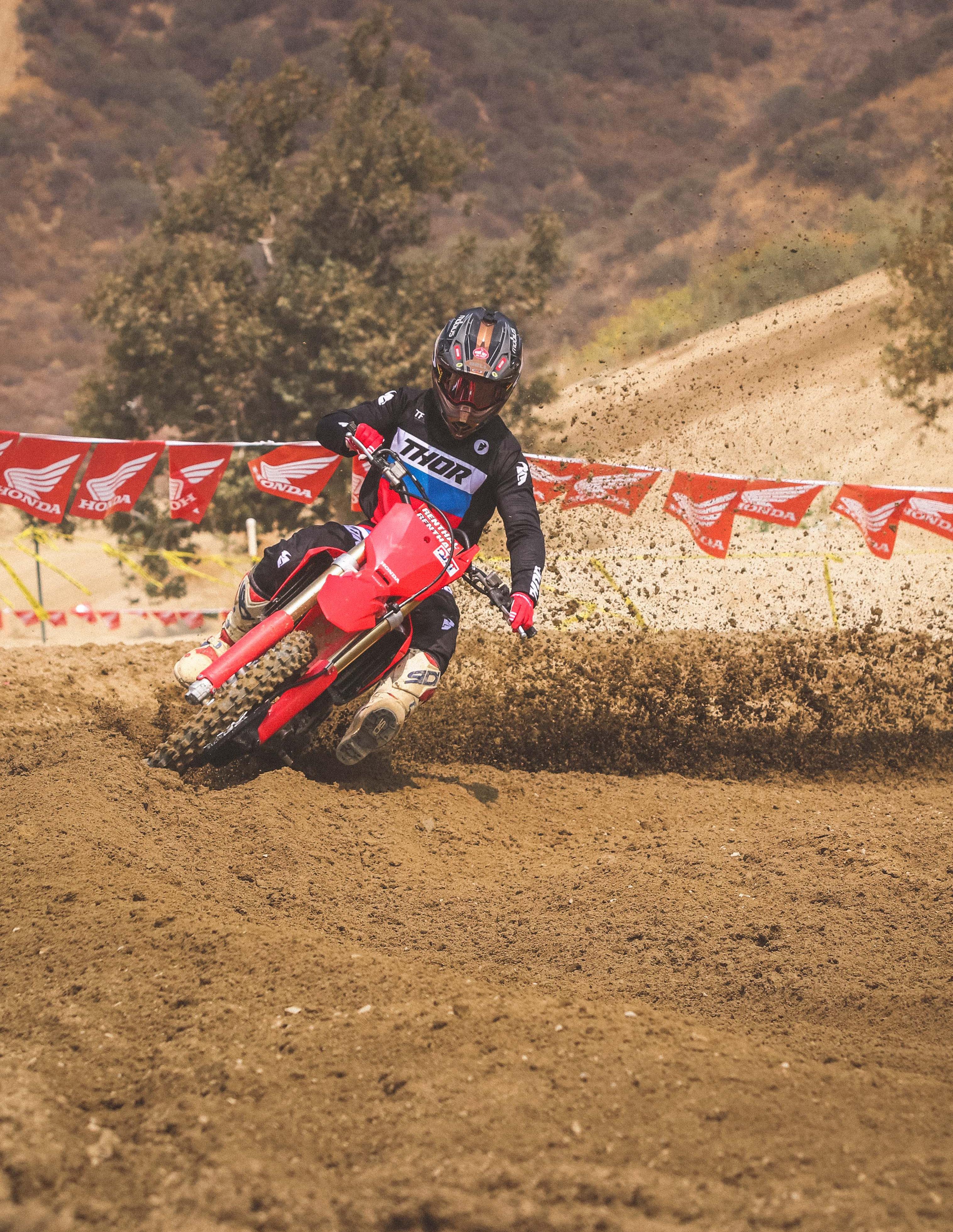

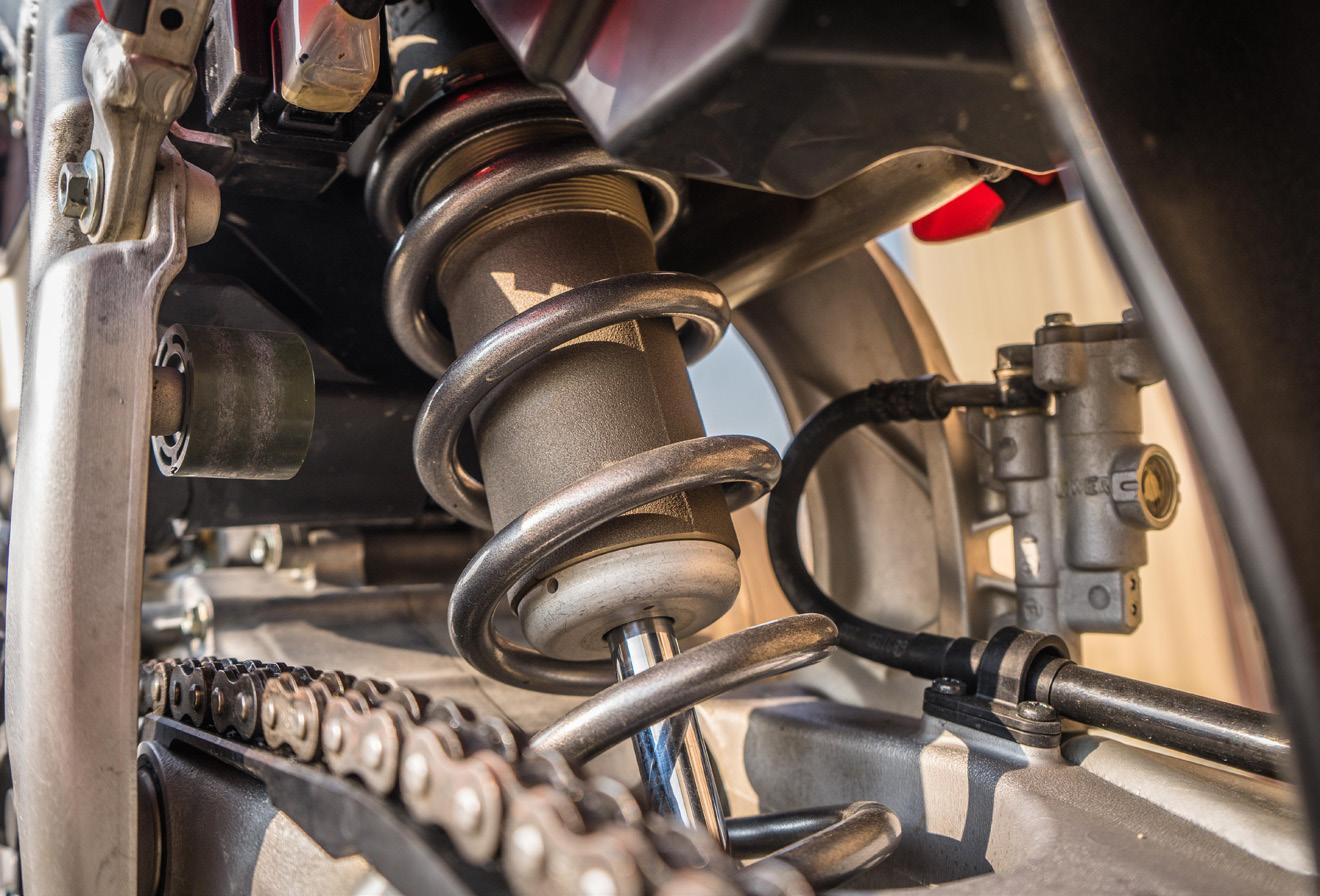

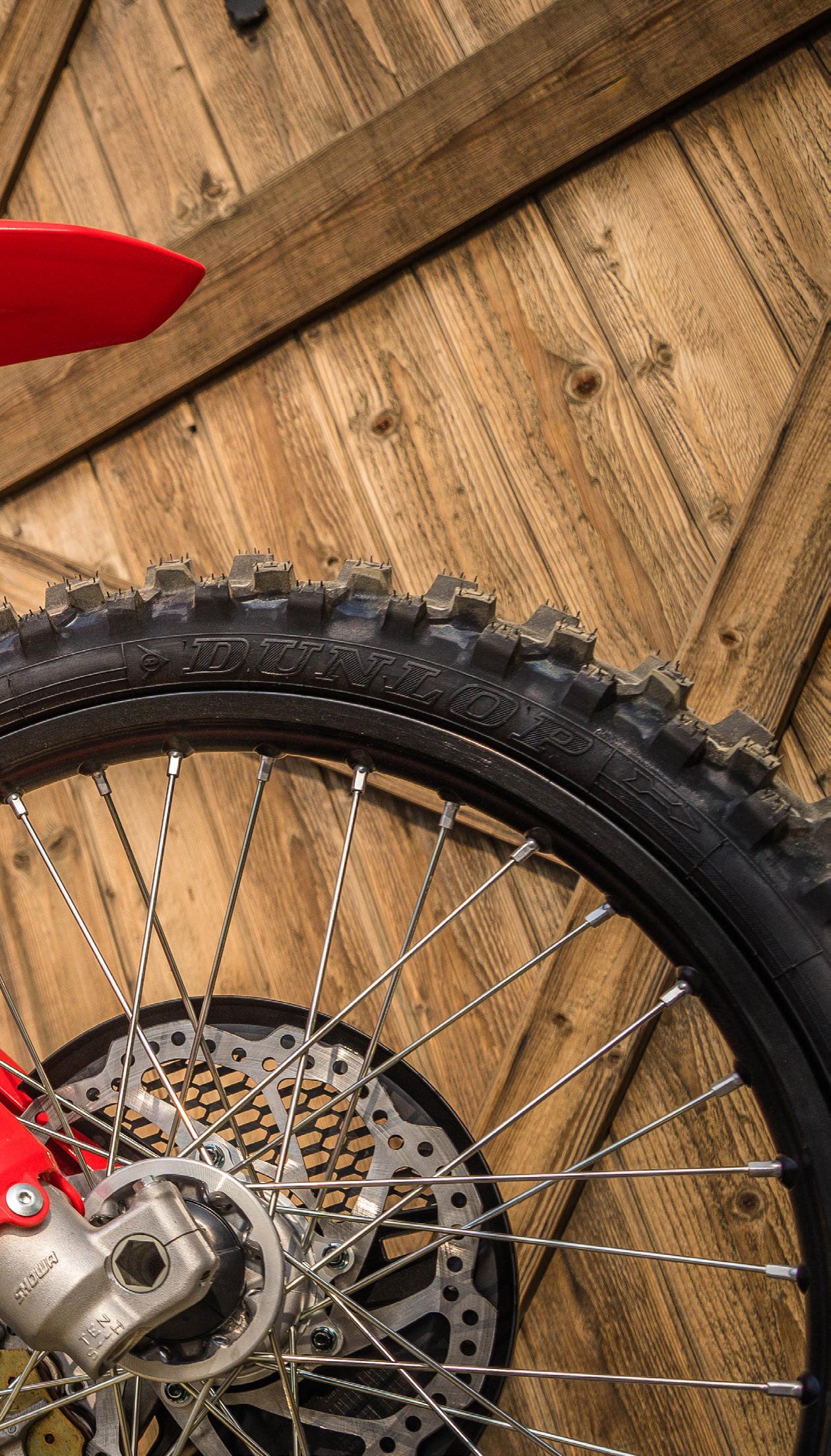
Overall, we feel the 2021 Honda CRF450R has made improvements from 2020 for 99% of the population. One word to sum up this bike is rideability. The older Honda was anything but “rideable” for a good portion of riders, especially when a track started to deteriorate. The new power character is smooth and linear, yet boasts enough power for any near mortal. The FI mapping glitch is very uncharacteristic of Honda. It shows the consequences of downsizing R&D in the United States, and in combination with pandemic-related issues, the new test riders can be the media, the aftermarket, and/or the customers.
Suspension wise, most of our racing-focused testers felt the CRF could use some tweaking with a stiffer setup. Recreational riders (the majority of customers) might be very surprised with how suspension that gets picked apart in the press actually performs for them. The chassis is also improved with good cornering, an agile yet semi-planted feel, and better bump absorption. We’ve been able to get this bike working fairly well with just a few minor (and free) tweaks like adding oil to the forks, dropping the forks, etc. The CRF450R is a good overall package for a lot of riders— less polarizing, more real world.
- Improved CRF450R over previous model for 99% of ridership - Increased rideability and versatility - Flaws on the bike are minimal, and most are easily resolved
